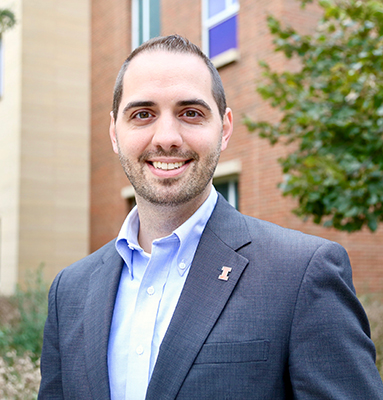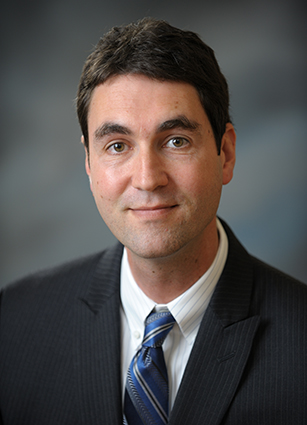Staying power: How the Lasting Effects of Incentives Could Lead to Healthier Habits
Aug 5, 2024, 08:30 AM

Health screenings and vaccines are powerful tools for fighting disease — and incentives can motivate individuals to participate in both. But how do you most effectively leverage those incentives to encourage maximum participation? And can those incentives create long-lasting habits? That’s the focus of a new study coauthored by Gies associate professors of finance David Molitor (right) and Julian Reif, as well as Damon Jones of the University of Chicago. In their working paper, “Incentives and Habit Formation in Health Screenings: Evidence from the Illinois Workplace Wellness Study,” they discovered that, in these particular situations, incentives can create persistent habits, and the timing of the incentives plays a big role in that.
Their findings are part of a multi-year, large-scale randomized control trial at the University of Illinois designed to rigorously evaluate the effectiveness of workplace wellness programs. In recent years, those programs have become an $8 billion industry, encouraged by the Affordable Care Act, which allows employers to financially reward participation in these programs. Through the Illinois Workplace Wellness Study, Molitor and Reif are exploring the impact of those rewards, looking at areas that others have overlooked.
“Economists and other social scientists have documented that habits can form in many different domains, such as smoking, voting, and social media use,” said Molitor, who also serves as the director of Gies’ Health Care Research Initiative (HCRI). “Prior studies of health habits have focused on high-frequency behaviors like exercise, handwashing, and diet. What people have not studied in the health space are lower-frequency behaviors like health screenings — things that you don’t do every day, but rather every year or every few years.”
To explore that, they divided nearly 5,000 university employees into two different waves and followed them over time. Participants in both groups were randomly assigned financial incentives to participate in an annual health screening, with incentives ranging from zero (i.e. a free health screening) to $200. Each year, those incentives were re-randomized, allowing researchers to study their impact. And what they found was surprising.
“Our findings show financial incentives can create sizeable, persistent habits for infrequent health behaviors like screenings. Not only did those incentives have an immediate effect on behavior in the year they’re offered, but that effect persisted,” Molitor said. “About a third of that effect persists one year later, and that habit formation appears to persist even into year two.”
In other words, more than 30 percent of people who were incentivized to get an annual health screening came back the second and third year, regardless of the incentives they were provided. What’s just as interesting, however, is that the incentives provided in the second year had little impact on participation in the third year, which means that the effect is unique to the first year. The reason for this isn’t immediately clear, but the researchers have their theories.
“What’s likely happening is that there is learning and taste discovery that occurs when you first get onboarded to the program, and getting people to engage at this early stage leads to persistent engagement,” Molitor said.

For example, maybe you find out that you enjoy learning more about your health. Or maybe you discover that the process isn’t difficult, so you’re more likely to return. Either way, their findings could be useful for employers, public health authorities, and others trying to incentivize low-frequency events like health screenings that play a big role in public health. Their discovery, for instance, could help authorities better analyze the cost effectiveness of such programs by showing the bigger picture.
“If you only focus on that first year, you would miss how the incentives also boosted future screenings,” Molitor said. “The total number of additional screenings over a three-year period is about 70 percent bigger — almost double the magnitude of the effect in the first year alone.”
“We’re among the first to quantify that,” said Reif (right), adding that this information could help determine not just how incentives are spent, but where. “Suppose you’ve rolled out a program in Champaign, Illinois, and paid people to come out and get a flu shot. Then in the second year, you want to know ‘Should we give these incentives again to people in Champaign, or should we do it in Springfield?’ Our results say you should go to Springfield, because they haven’t had it yet, so the incentives will be more effective there.”
Implications of the study could extend far beyond employee wellness initiatives. “We just went through a pandemic where there was a lot of debate about how you get people to vaccinate,” said Reif. “There are over 300 million people in this country. It’s very expensive to get everyone vaccinated. Understanding the most cost-effective way to design these programs is important for maximizing public health.”
